#st john us virgin islands
Explore tagged Tumblr posts
Text
St. John House Rentals on the Beach: Your Guide to Real Estate and Life on St. John, US Virgin Islands
St. John, the smallest of the U.S. Virgin Islands, offers breathtaking natural beauty, tranquil beaches, and a welcoming island community. Known for its laid-back charm and pristine beaches, St. John has become a favored destination for those seeking house rentals on the beach, investment properties, and land for sale to build their dream homes. With much of the island preserved as part of the Virgin Islands National Park, St. John’s real estate holds unique appeal for vacationers, long-term residents, and investors alike. Here’s a comprehensive guide to St. John house rentals, real estate options, and the perks of island living.https://340realestatestjohn.com/listing/desert-rose-villa/
1. St. John House Rentals on the Beach
Whether you're planning a tropical vacation or looking for a long-term rental, St. John offers an array of stunning beachfront rentals. Renting a beach house on St. John allows visitors to immerse themselves in the island lifestyle, waking up to ocean views, and easy access to snorkeling, swimming, and sunbathing.
Luxury Villas: St. John’s beach house rentals include luxurious oceanfront villas, complete with private pools, spacious decks, and direct beach access. Areas like Chocolate Hole, Peter Bay, and Cruz Bay are popular for upscale rentals that offer high-end amenities, privacy, and stunning views of the turquoise Caribbean Sea.
Family-Friendly Cottages: For families or larger groups, St. John also has beach cottages and villas with multiple bedrooms and kid-friendly amenities. These rentals are often located near Cruz Bay, where families can enjoy a variety of local restaurants, shops, and nearby beaches such as Maho Bay and Trunk Bay.
Vacation Rental Investment: St. John’s booming tourism industry makes beachfront house rentals a lucrative investment opportunity. Many buyers purchase properties specifically for vacation rentals, allowing them to offset costs with rental income while also having a private retreat to visit throughout the year. St. John’s consistent flow of tourists ensures high demand, particularly during peak seasons.
2. St. John Land for Sale
For those interested in building a custom home, St. John has land parcels available for purchase. Buying land on St. John allows you to design a property that meets your exact vision, whether you’re dreaming of a luxurious estate or a cozy beach house.
Prime Locations: Areas like Bordeaux Mountain and East End offer expansive plots with spectacular ocean views and natural surroundings. Land in these areas provides seclusion and tranquility, making it perfect for custom homes or private retreats. Coral Bay, a quieter part of the island, also has land available for development and offers a slower-paced, community-oriented atmosphere.
Environmental Considerations: Given St. John’s commitment to preserving its environment, it’s essential to be mindful of zoning laws and building regulations, especially when constructing near protected areas. Working with local architects and builders who understand the island’s landscape and environmental policies can help you navigate the building process smoothly.
Investment Potential: Purchasing land on St. John is not only ideal for personal use but also holds strong investment potential. As a limited resource, land on the island is in high demand, and its value can appreciate significantly over time, particularly in scenic or secluded locations.
3. Real Estate Guide to St. John
St. John’s real estate market offers a diverse range of options, from cozy family homes to lavish estates. Here’s a breakdown of what to expect in St. John’s real estate market:
Single-Family Homes: St. John’s residential real estate includes single-family homes in neighborhoods like Fish Bay and Coral Bay. These homes vary from classic Caribbean-style cottages to more modern residences. Single-family homes on St. John offer a tranquil setting and a strong sense of community, with amenities nearby for year-round or seasonal living.
Luxury Estates: In areas like Peter Bay and Cinnamon Bay, luxury estates boast panoramic views of the Caribbean, high-end amenities, and a sense of seclusion. These estates are typically located on large plots of land, offering both privacy and scenic beauty. High-end real estate on St. John is an excellent option for those looking for exclusivity and an opulent Caribbean lifestyle.
Condos and Apartments: For buyers seeking more affordable housing options, St. John has a limited selection of condos and apartments, typically located near Cruz Bay. These are popular among those who prefer a low-maintenance lifestyle or want to have an investment property they can rent to tourists.
4. St. John, US Virgin Islands: A Unique Lifestyle
Living on St. John means enjoying an unmatched quality of life, surrounded by natural beauty, a tight-knit community, and a relaxed Caribbean atmosphere. Here’s what makes St. John an attractive place to live and invest in:
Community and Culture: St. John is known for its close-knit, welcoming community. Residents often gather at local events, farmers' markets, and community centers, creating a friendly and supportive environment. The island’s cultural heritage is rich, with influences from African, Danish, and Caribbean traditions.
Outdoor Activities: With two-thirds of St. John protected as national parkland, outdoor activities are abundant. Residents and visitors alike can enjoy world-class snorkeling, hiking, kayaking, and sailing. Popular destinations include Trunk Bay, Cinnamon Bay, and Reef Bay Trail, which showcase the island’s diverse wildlife and scenic landscapes.
Proximity to the Mainland: St. John is easily accessible from the U.S. mainland, with regular flights to nearby St. Thomas and a short ferry ride to St. John. The island’s U.S. territory status makes it convenient for American buyers, as they don’t need visas or special permits to reside or invest in property.
5. Working with Local Real Estate Experts
Purchasing property on St. John can be complex, particularly if you’re unfamiliar with the local market. Working with a reputable real estate agency like 340 Real Estate St. John is essential for a smooth buying process. Their team of experts offers guidance on everything from property selection to understanding local zoning laws, as well as support for vacation rental management if you’re looking to generate income from your property.
340 Real Estate St. John specializes in helping clients find properties that meet their unique needs, whether it’s a beachfront rental, a luxury estate, or land for development. Their knowledge of St. John’s market trends, neighborhood dynamics, and investment potential makes them an invaluable partner in your real estate journey.
Conclusion
St. John is more than just a beautiful destination; it’s a community that offers a peaceful lifestyle, incredible natural beauty, and significant real estate opportunities. From beachfront house rentals to luxury estates and land for development, St. John’s real estate market caters to a variety of preferences and budgets.
Whether you’re looking for a rental to enjoy a Caribbean vacation, planning to build a custom home, or seeking a profitable investment, St. John has a wealth of options. By working with trusted real estate professionals like 340 Real Estate St. John, you can make informed decisions and bring your dream of island living to life in one of the Caribbean’s most stunning locations.

#virgin islands#realestate#st thomas virgin islands#st john house rentals on the beach#St John Info#St John land for sale#St John Real Estate Guide#st john us virgin islands
0 notes
Photo

Waves gently kiss the shore at the US Virgin Islands National Park in St. John, where the water dazzles in the most vibrant shades of blue. It's a perfect slice of paradise where the sky meets the sea in a dreamy dance of colors.
#US Virgin Islands#St. John#beach#paradise#waves#shore#vibrant#travel#tropical#seaside#island life#Caribbean#nature#sky and sea#dreamy colors
46 notes
·
View notes
Text
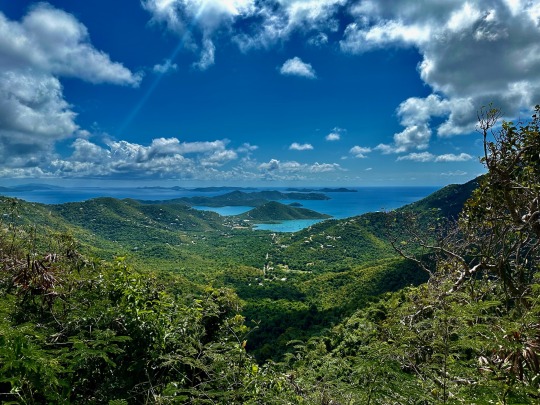

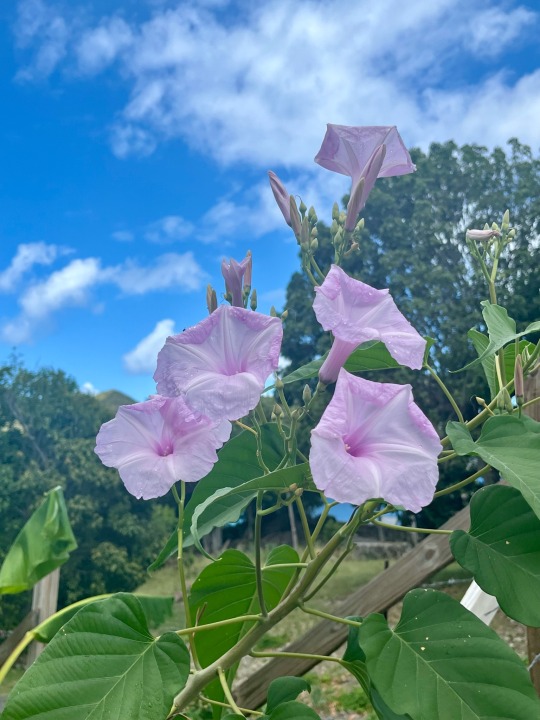
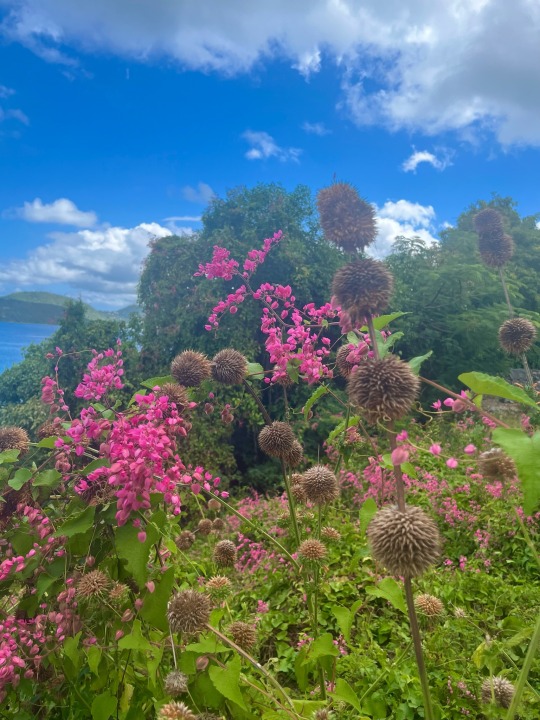




U.S. Virgin Islands National Park.
8/63
#st john#virgin islands#national park#photography#landscape photography#landscape#outdoors#ocean#flowers#morning glory#islands#us national parks#ruins#sugar factory#old building
10 notes
·
View notes
Text
Postcards from Snagglepuss
Now THIS is snorkelling, and then some!
LIMEHOUSE BAY, VIRGIN ISLANDS NATIONAL PARK, ST. JOHN, US VIRGIN ISLANDS: Is it any wonder that the United States Virgin Islands can get to be rather interesting diving country, even in parts of Virgin Islands National Park, occupying as it does a substantial part of St. John island (including some 40% of St. John's offshore waters, nearshore even)?
Yet what's especially fascinating is that, save for mooring fees at designated locations, Virgin Islands National Park is one of only a few National Park Service lands as doesn't charge entrance fee. Which made it especially worthwhile, allowing for a shore excursion seeking out the ruins of sugar plantations which once fuelled the local economy--howbeit for the Danish West Indies Company, which relied on slave labour all the more just to stay viable. Brings a tear to your eyes, does it not? Let alone the scent of bay leaves, and their eventually being distilled into bay rum, quite a potent aftershave, if I may say so!
But to the diving experience: You can't help but sense some sort of ecstatic feeling when you're in the water ... when you're snorkelling, even. in such interesting waters like those of Limehouse Bay. A Park Service ranger who has some snorkelling expertise himself helped explain some of the more worthwhile dive spots, and some of the reefs more fascinating--even if he was rather stunned at first by our appearance, as well as learning just how interested Peter Potamus was in diving, to begin with!
Enough even for Squiddly Diddly, the Magic Divers' photographic expert (particularly so in the underwater arena), to come up with several photographs, candid and otherwise, of all of us in the Limehouse Bay reef. Yet trying to find a patch of sand so that a kneeling group shot of us took some effort; after all, from experience, coral can be rather potent, and can scratch if you're not careful enough.
How else, then, could diving not be irresistable?
*************
@warnerbrosentertainment @joey-gatorman @jellystone-enjoyer @funtasticworld @iheartgod175 @archive-archives @themineralyoucrave @thylordshipofbutts @thebigdingle @screamingtoosoftly @warnerbros-blog1 @railguner34 @groovybribri @theweekenddigest @indigo-corvus @warnerbrosent-blog
#hanna barbera#fanfic#winter vacation#postcards#snagglepuss#diving vacation#peter potamus#us virgin islands#st john#virgin islands national park#hannabarberaforever
2 notes
·
View notes
Text
Discover your dream getaway with luxury villa vacation rentals in St. John's, US Virgin Islands. Book directly with owners for personalized stays, stunning ocean views, and unmatched comfort. Perfect for family vacations or romantic escapes, experience the ultimate in island living with these exceptional properties.
0 notes
Text
Choose a Catamaran in the Virgin Islands
Take a Kindred Spirit Catamaran Charter to See the Virgin Islands! Sailing, sunset cruising, or overnight adventures aboard a private catamaran are all possible. Have fun doing things like paddleboarding, scuba diving, snorkeling, and sailing. Immerse yourself in unique experiences with the help of our expert personnel. Secure your spot today!

#st john to BVI day trips#usvi catamaran charter#overnight cruise trip#sunset sail st john#st john usvi activities#catamaran rental virgin islands#us virgin islands activities
0 notes
Link
0 notes
Text

The site in Los Alamos, New Mexico, where Robert J. Oppenheimer and his team developed the First Atomic Device in the 1940s is now a United States National Historic Park. It includes structures like this replica of the campus’s main gate. Photograph By Brian Snyder, Reuters/Redux
Trace Oppenheimer’s Footsteps, From New Mexico To The Caribbean
The Father of the Atomic Bomb Chased History—and Then Ran From It. Here’s How to Visit Places Important to the Influential Physicist, Including a U.S. Virgin Islands Beach.
— By Bill Newcott | March 06, 2024
As Christopher Nolan’s film Oppenheimer reintroduces the “father of the atomic bomb” to audiences, there’s no better time to hit the road and retrace some of J. Robert Oppenheimer’s most momentous steps—from New Mexico, where the physicist’s dream of a nuclear weapon was realized in the Manhattan Project; to a Nevada testing ground, where his worst fears about the bomb were demonstrated; to a remote Caribbean beach where he could, at last, quiet the demons that haunted him.
Los Alamos: Birthplace of The Atomic Bomb
The Gadget, as the first atomic device was called by its creators, was born not at Trinity—the New Mexico desert site where it was detonated—but about a hundred miles north, in the sleepy mountain town of Los Alamos. It was there that Oppenheimer, who’d spent some of his teen years in New Mexico, commandeered a former boys’ school as his base of operations.
Oppenheimer’s Manhattan Project campus, now a national historic park, is virtually unchanged from his time.
Strolling along the tree-shaded “Bathtub Row”—so named because these were the few houses on campus equipped with full baths—I walk past the squat bungalow Oppenheimer shared with his wife, Kitty, and their two children. At one end of the street, I nearly brush shoulders with a pair of life-size bronze statues: Oppenheimer—resplendent in his famous wide-brimmed hat—consulting with the project’s military head, General Leslie Groves.
Beyond them I push open the door to Fuller Lodge—the former school assembly hall, now an art gallery and community center—and I am transported into the most riveting moment from the film Oppenheimer.
You remember it: Following the bombing of Hiroshima, the scientist stands before a stone fireplace in this room and gives a victory speech to the Los Alamos staff. But even as he mouths words of triumph, Oppenheimer privately suffers searing visions of the devastation the bomb has caused.
And now, here I am, standing before that same fireplace, facing the long expanse of the room’s ponderosa pine walls and timbered ceiling. It is not hard to imagine Oppenheimer at this spot, in awe of what his team had accomplished in three short years; horrified by its implications for the rest of human history.
Trinity: Site of The First Atomic Blast
Most of the year, Trinity, the site of the first atomic blast, is still an active tract of the White Sands Missile Range, in New Mexico. On two special days, however—usually the first Saturday in April and the third Saturday in October—the U.S. Army hosts a Trinity Open House. (Due to what the U.S. Army called “unforeseen circumstances,” the 2024 April Open House has been canceled).
On those days, vehicles with plates from Alaska to Florida line up at the White Sands Stallion Gate, then bounce the 17 miles south to the circular chain link fence that encloses the spot where Oppenheimer’s Gadget ushered in the atomic age. They park in a seldom used lot and enter through a narrow gate, approaching the stark, black monument at the circle’s center with almost visceral solemnity.
Even in spring, it’s kind of hot here in the treeless, open-air oven the Spanish conquistadors called Jornada del Muerto (Journey of the Dead Man)—but not as hot as it got at precisely 5:30 a.m. on July 16, 1945, when a fireball half as hot as the surface of the sun scorched the earth of this basin.

Tourists at the White Sands Missile Range, in New Mexico, check out an example of the “Fat Man” bomb casing, built to contain a nuclear device. Here at the remote Trinity site on July 16, 1945, the Manhattan Project successfully detonated the first atomic bomb. Photograph By Martin Specht, Agentur Focus/Redux
The 100-foot tower on which the Gadget was mounted is gone, but the Trinity crater remains: a broad, surprisingly shallow, plate-like depression. At its greatest depth the hole that Trinity punched into the desert floor measures only about 10 feet. The 100-foot cushion of air under the tower prevented deeper excavation.
“As a reminder,” a guide tells a clutch of tourists, “you are not permitted to remove anything from the ground.”
“Anything” would be samples of trinitite, the glass-like element that was created in the bomb’s searing blast.
Trinity is the main attraction on visitor days, but the curious can hop a bus to a small cabin, the old Schmidt Homestead, about two miles from Ground Zero. It was here, in the former dining room, where Oppenheimer supervised the final assembly of the Gadget.
With its bare walls and polished floors, the empty house looks as benign as a fixer-upper awaiting a redo by a resourceful real estate agent. But it’s not hard to imagine the team of scientists, just days before the blast, gingerly piecing together the Gadget: A sphere of 32 little bombs surrounding a softball-sized ball of plutonium.
All 32 bombs would be ignited simultaneously. And then, literally, all hell would break loose.
Nevada Test Site
After the war, the U.S. government continued to test nuclear devices of ever more harrowing capability—first in the Pacific, and then at the Nevada Test Site, about a hundred miles north of the then backwater gambling town of Las Vegas. (On the 26th floor of Binion’s Gambling Hall in downtown Vegas, you can still dine in the restaurant where tourists once watched their “Atomic Cocktails” slosh back and forth as nuclear tests made the building sway.)
There is no indication that Oppenheimer ever set foot on the Nevada test site, where more than a thousand descendants of the Gadget were detonated over a span of three decades. Still, the site is essential to Oppenheimer’s story in that it represents his worst nuclear nightmares.
“If atomic bombs are to be added as new weapons to the arsenals of a warring world…then the time will come when mankind will curse the names of Los Alamos and Hiroshima,” he declared in 1945.
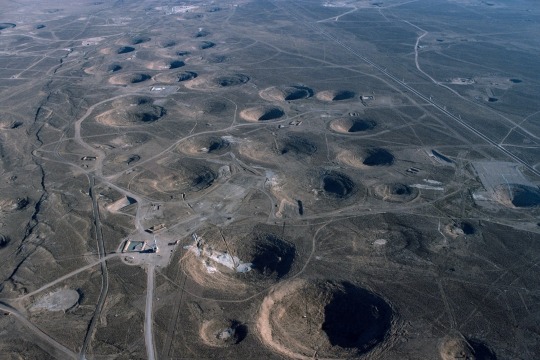
A hundred miles North of Las Vegas, the Nevada Test Site is where the U.S. and Britain continued to test Nuclear Devices after World War II. The site is open once a month for a free tour. Photograph By Karen Kasmauski, National Geographic Image Collection
“Basically, Oppenheimer was against nuclear testing post-Manhattan Project,” says Joseph Kent, deputy director and curator of the Atomic Museum in Las Vegas. “He felt the Manhattan Project was necessary, but when they started working on the hydrogen bomb, which was much more destructive, he wasn’t comfortable with that.”
We’re standing in the lobby of the museum, now in its 25th year, just a few blocks from the excess of the Las Vegas Strip. Near the door rests an enormous, bulbous “Fat Man” bomb casing, built in 1945 to contain a nuclear device like the Gadget I saw in New Mexico.
Primarily, the Smithsonian-affiliated Atomic Museum serves as a visitors center for the Nevada Test Site, officially known as Nevada National Security Sites (NNSS). Thanks to the museum’s continuing relationship with NNSS, once a month a busload of 50 or so history buffs leave from the museum’s parking lot to begin a free eight-hour tour of the site.
It begins with an hour drive up US 95, a trip that vividly explains why the site is here: The landscape is a mix of wide, flat valleys, perfect for bomb blasts, interrupted by occasional mountain ranges that would discourage unauthorized watchful eyes.
The highlight is a visit to Sedan Crater: a 300-foot-deep, 1,200-foot-wide crater blasted out by a 104-kiloton bomb to see if nuclear devices could be safely used to dig canals and sea ports. The answer, apparently, was “no, they can’t.”
Your guide will take a group picture at Sedan and send it to you later, but that is the one and only souvenir you’ll get: On the Nevada Test Site tour, you can’t take home rock samples and you can’t bring your camera along.
“Oppenheimer Beach,” St. John, USVI
On the eastern shore of Hawksnest Bay in St. John, U.S. Virgin Islands, a low-slung white structure sits on the broad, sugary sand. The building is a community center, but until just a few years ago, before a hurricane swept it away, a tidy wood cottage crouched there. It had been built in the 1950s by a quiet man who periodically arrived with his wife and family, keeping mostly to himself. In his later years, this is where Oppenheimer escaped the stresses of a world he’d helped create. And Hawksnest Bay is where he and his wife had their ashes spread out.

The sun sets over St. John, in the U.S. Virgin Islands. Oppenheimer and his wife and family spent time at a cottage here on Hawksnest Bay in the 1950s. Photograph By Michael Melford, National Geographic Image Collection
Today, locals call the spot Oppenheimer Beach.
Walking this beach, Oppenheimer could wish away the daily reminders of a nuclear arms race, far from the politicians who had exploited his genius to build the bomb and then, as the Nolan film portrays, turned on him when he expressed regret over his accomplishment.
On St. John, “no one was going to harass him,” local historian David Knight, whose parents house-sat for Oppenheimer during his absences, told the BBC. “No one knew who he was or cared.”
#Los Alamos | New Mexico#First Nuclear ☢️ Bomb 💣#Robert J. Oppenheimer#Los Alamos | Birthplace | Atomic Bomb#Christopher Nolan#United States 🇺🇸 National Historic Park#Atomic Blast 💥#Nevada | US 🇺🇸 States#Oppenheimer Beach | St. John | US Virgin Island
1 note
·
View note
Text


st. thomas // st. john // usvi
1 note
·
View note
Text
Homes in ST john USVI
Discover the ultimate getaway in the tropical paradise of St. John, USVI, with Seaview Homes. Our vacation rental properties, featured on seaviewhomes redefine luxury and comfort in this breathtaking island destination. Immerse yourself in the beauty of the Caribbean with our meticulously curated homes, offering unparalleled views, modern amenities, and the serenity of island living. Whether you seek a romantic escape, a family retreat, or a friends' gathering, our homes in St. John USVI are the epitome of relaxation. Indulge in the charm of the Virgin Islands and make your vacation unforgettable with Seaview Homes - your haven in paradise. Explore the magic of "Homes in St. John USVI" and create memories that last a lifetime.

0 notes
Text
A reef that has been degraded—whether by coral bleaching or disease—can’t support the same diversity of species and has a much quieter, less rich soundscape.
But new research from Woods Hole Oceanographic Institution shows that sound could potentially be a vital tool in the effort to restore coral reefs.
A healthy coral reef is noisy, full of the croaks, purrs, and grunts of various fishes and the crackling of snapping shrimp. Scientists believe that coral larvae use this symphony of sounds to help them determine where they should live and grow.
So, replaying healthy reef sounds can encourage new life in damaged or degraded reefs.
In a paper published last week in Royal Society Open Science, the Woods Hole researchers showed that broadcasting the soundscape of a healthy reef caused coral larvae to settle at significantly higher rates—up to seven times more often.
“What we’re showing is that you can actively induce coral settlement by playing sounds,” said Nadège Aoki, a doctoral candidate at WHOI and first author on the paper.
“You can go to a reef that is degraded in some way and add in the sounds of biological activity from a healthy reef, potentially helping this really important step in the coral life cycle.”
Corals are immobile as adults, so the larval stage is their only opportunity to select a good habitat. They swim or drift with the currents, seeking the right conditions to settle out of the water column and affix themselves to the seabed. Previous research has shown that chemical and light cues can influence that decision, but Aoki and her colleagues demonstrate that the soundscape also plays a major role in where corals settle.
The researchers ran the same experiment twice in the U.S. Virgin Islands in 2022. They collected larvae from Porites astreoides, a hardy species commonly known as mustard hill coral thanks to its lumpy shape and yellow color and distributed them in cups at three reefs along the southern coast of St. John. One of those reefs, Tektite, is relatively healthy. The other two, Cocoloba and Salt Pond, are more degraded with sparse coral cover and fewer fish.
At Salt Pond, Aoki and her colleagues installed an underwater speaker system and placed cups of larvae at distances of one, five, 10, and 30 meters from the speakers. They broadcast healthy reef sounds – recorded at Tektite in 2013 – for three nights. They set up similar installations at the other two reefs but didn’t play any sounds.
When they collected the cups, the researchers found that significantly more coral larvae had settled in the cups at Salt Pond than the other two reefs. On average, coral larvae settled at rates 1.7 times (and up to 7x) higher with the enriched sound environment.
The highest settlement rates were at five meters from the speakers, but even the cups placed 30 meters away had more larvae settling to the bottom than at Cocoloba and Tektite.
“The fact that settlement is consistently decreasing with distance from the speaker, when all else is kept constant, is particularly important because it shows that these changes are due to the added sound and not other factors,” said Aran Mooney, a marine biologist at WHOI and lead author on the paper.
“This gives us a new tool in the toolbox for potentially rebuilding a reef.”
Adding the audio is a process that would be relatively simple to implement, too.
“Replicating an acoustic environment is actually quite easy compared to replicating the reef chemical and microbial cues which also play a role in where corals choose to settle,” said Amy Apprill, a microbial ecologist at WHOI and a co-author on the paper.
“It appears to be one of the most scalable tools that can be applied to rebuild reefs, so we’re really excited about that potential.”"
-via Good News Network, March 17, 2024
#coral#coral reef#marine life#marine biology#conservation#ecology#environment#environmental news#endangered species#coral bleaching#virgin islands#science and technology#climate action#climate change#climate hope#soundscapes#sound therapy#good news#hope
2K notes
·
View notes
Text
St. John House Rentals on the Beach: Your Guide to Real Estate and Life on St. John, US Virgin Islands
St. John, the smallest of the U.S. Virgin Islands, offers breathtaking natural beauty, tranquil beaches, and a welcoming island community. Known for its laid-back charm and pristine beaches, St. John has become a favored destination for those seeking house rentals on the beach, investment properties, and land for sale to build their dream homes. With much of the island preserved as part of the Virgin Islands National Park, St. John’s real estate holds unique appeal for vacationers, long-term residents, and investors alike. Here’s a comprehensive guide to St. John house rentals, real estate options, and the perks of island living.https://340realestatestjohn.com/listing/desert-rose-villa/
#St. John House Rentals on the Beach: Your Guide to Real Estate and Life on St. John#US Virgin Islands
0 notes
Photo

Feast your eyes on the serene Trunk Bay, enveloped by lush greenery and kissed by turquoise waters. This panoramic view captures the essence of St. John, US Virgin Islands — a true paradise on Earth.
#Trunk Bay#St. John#US Virgin Islands#paradise#nature#tropical#serene landscape#travel#turquoise waters#Caribbean#lush greenery#panoramic view#beach destination#island life#vacation spot#nature photography
7 notes
·
View notes
Text

1 note
·
View note
Text
Winter in Japan 💛🌠
https://lalagovn.com/6-best-resorts-on-st-john-us-virgin-islands/
#nature#travel#japan landscape#japan travel#japan trip#photooftheday#japan#architecture#beauty#relax
615 notes
·
View notes
Photo
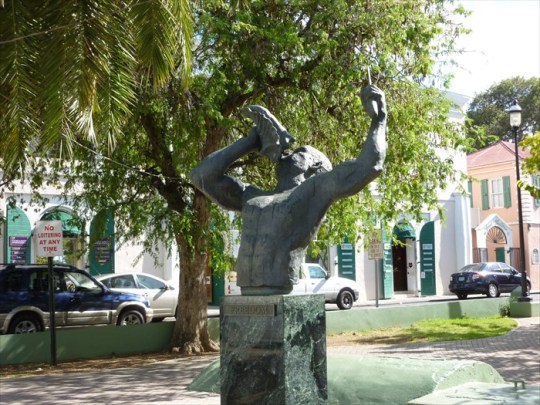
On this day, 2 July 1848, enslaved people in St Croix (now the US Virgin Islands) rebelled, burned down plantations and besieged the town of Frederiksted. The Caribbean island was at that time a Danish colony, and it had been decreed that slavery would be abolished in 1859, but the enslaved workers refused to wait. After revolutions in Europe led to turmoil in nearby Martinique and Guadeloupe, hundreds of rebels seized the moment and rose up. By the end of the day, only the local military garrison, Fort Frederiksværn, had not yet been overrun. The following day, the governor general, Peter von Scholten arrived. Faced with demands from the enslaved people to immediately abolish slavery, or they would burn the town to the ground, he relented and shouted out: “Now you are free, you are hereby emancipated.” Technically von Scholten had no authority to abolish slavery, and he was strongly criticised by enslavers and Danish authorities. But faced with a fait accompli, Denmark had no real choice but to accept the situation. The agreement achieved by the formerly enslaved people went even further than just immediate emancipation, as the order issued on the night of July 3 also applied to the Danish colonies of St Thomas and St John, and directed that the enslaved had the right to keep their current housing and provisions for three months, and that elderly and ill labourers had to be looked after by the former enslavers "until further determination". The old enslavers subsequently sued the Danish government demanding recompense for the loss of their "property". Danish Parliament rejected their claim, on the grounds that "slavery [was] itself an institution in conflict with religion and justice". But they did then agreed to pay a relatively low compensation figure of $50 per enslaved person. More information, sources and map: https://stories.workingclasshistory.com/article/9191/st-croix-enslaved-revolt Pictured: St Thomas freedom statue https://www.facebook.com/photo.php?fbid=654237043416181&set=a.602588028581083&type=3
384 notes
·
View notes